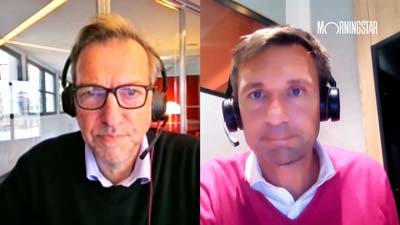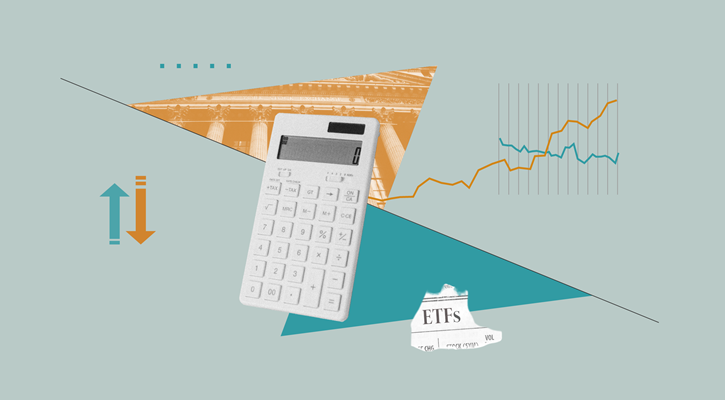TRANSCRIPT
Jeremy Glaser: For Morningstar, I'm Jeremy Glaser. I'm joined today by Ben Johnson--he's the director of global ETF research here at Morningstar. We'll look at the pros and cons of taking a passive approach to fixed-income investing.
Ben, thanks for joining me.
Ben Johnson: Jeremy, I'm glad to be here.
Glaser: Let's start by looking at where the investor fund flows are going. Has there been a strong preference amongst investors for passive fixed-income investments?
Johnson: So, if you zoom out and you look very broadly at where flows have been going across the landscape--inclusive of actively managed mutual funds, index mutual funds, and ETFs--what you've seen is that for the year to date through the end of October, there's been $67.5 billion in net new inflows into taxable-bond funds. So, that category across mutual funds and ETFs, active and passive, has been the second-highest asset-gathering category for the year to date thus far.
Now, if you go one level deeper and you divide that space between active and passive--so actively managed mutual funds, actively managed ETFs and then passively managed mutual funds and ETFs--what you see is a stark dichotomy. We've seen $108 billion in investors' assets flee from actively managed taxable-bond funds, and we've seen $40.5 billion of net new inflows into passively managed bond funds and ETFs.
Now, going another layer deeper still, what you see is that amongst the actively managed bond funds, nearly half of those outflows can be attributed to one fund--that's PIMCO Total Return (PTTRX). And there is another $7.7 billion that has flowed out of the Templeton Global Bond Fund (TPINX). If you look at the passive side of the ledger, the top three asset gatherers amongst index mutual funds and ETFs have been Vanguard Total International Bond Index Fund (VTIBX), their Total Bond Index Fund (VBMFX)--which just houses U.S. securities--and then the iShares Corporate ETF (LQD). So, these are fairly vanilla, fairly core, not very exotic fare gathering a lot of investors' assets on the passive side of the ledger.
Glaser: Let's looks at some of the factors of why investors might be going for passive now. Cost has to be a big one. Is that a major factor in trying to decide if you want to go active or passive when it comes to bonds?
Johnson: Well, cost clearly matters. Regardless of whether it's a fixed-income fund, an equity fund--you name it--cost matters. We know that with certainty. Now theoretically, it might matter incrementally somewhat more in the bond-fund space; if you think about the distribution of returns in bond funds, it's inherently narrower than it might be in equity funds--and certainly more-volatile asset classes, more generally speaking. So, fees clearly matter. And I think part and parcel of what you're seeing in flows is that investors are increasingly aware of just how much they matter. And again, theoretically, fees matter somewhat more, all else equal, in the realm of bond funds.
Glaser: But this isn't universal, right? There are some cheap active funds; there are potentially some expensive index funds. You really do have to look closely.
Johnson: No, it's certainly not a universal truth. What I would say is that if you look at index funds--and broad-based bond index funds in particular--they tend to be very inexpensive. So, if you look at the Vanguard Total Bond Market Index Fund, the annual fee on that is 7 basis points. It's extremely low. Index funds can get more expensive when you get into more niche, more esoteric corners of the bond market--emerging-markets debt, for example.
Now, it's also not universally true that all actively managed bond funds are expensive. There are some very well managed actively managed funds that are certainly lower fee--at least relative to their peer group. If you take, for example, Dodge & Cox Income (DODIX), which has a Morningstar Analyst Rating of Gold, it has a low fee--at least as measured against its mutual fund peer group. It charges 44 basis points or 0.44% a year. Now, while that's a low fee relative to its mutual fund counterparts, it's also more than six times the fee that's charged by the Vanguard Total Bond Market Index Fund.
Now, that said, it's very important to stress that investors, over a very long period of time, have gotten good value for their money in Dodge & Cox Income, which has handily beaten both its peers and its index since its inception in 1989. So, more than anything, yes, fees are important, but don't look at them in isolation. Understand the value proposition, look at the other four pillars that we consider when we assign our Morningstar Analyst Ratings. Price is just one of them.
Glaser: Let's look at what you're paying for in terms of strategy. One of the arguments for active management in the fixed-income space is if you look at something like the Barclays U.S. Aggregate Bond Index, it has a lot of Treasuries in it; maybe you don't want that much exposure, and you want to tilt away from some of these things. Do you think that active managers are really adding value there? Do we have signs that they are earning their higher fees?
Johnson: Well, that's certainly the case. To beat the Aggregate Index, active managers have to look different from the index. And what we see is that, by and large, many of them look quite different from the Aggregate Index and have--at least at first blush--been able to generate value by virtue of doing so because the index, in its current state, is very heavily weighted to U.S. Treasuries, to agency securities, to this whole pool of assets that has the backing of the U.S. government behind it. So, what you've seen is that active managers, by virtue of straying from that index chiefly by loading up on riskier credits--be it higher-yield bonds, nonagency securities, adding to the credit-risk profile of their portfolios--they've been able to, fairly regularly in some cases, handily beat the index by virtue of being different, and they've chiefly done that by taking more credit risk.
Glaser: But if they are taking on more risk, does that reduce some of the diversification benefits of holding a bond fund? Would a passive fund maybe be a better bet if diversification is what you're looking for?
Johnson: That's certainly the case. By ratcheting up that risk, what you have is, by result, a performance profile that tends to move in closer step with the equity portion of your portfolio. So, by reaching for higher returns, you are sacrificing some of that diversification benefit that you would expect from the fixed-income portion of your portfolio as you stray further and further from the the safety of the Aggregate Index.
Glaser: We touched on this briefly: When it comes to performance, is there a clear-cut winner between active and passive here?
Johnson: There are no clear-cut winners between active and passive. Furthermore, what you're going to see is a natural ebb and flow in terms of which strategy type is "winning" over any given period of time. What we've clearly seen is that in the taxable-bond space, active managers in general have had better odds of success relative to other asset classes--U.S. large-cap equities in particular. In many regards, this is because it's somewhat easier for them to be different from the benchmark against which they're being measured and to be rewarded for doing so. What we've seen in bonds is what we've seen across all categories--again, the importance of fees. Success rates amongst the lowest quartile of managers in the taxable-bond space in our intermediate-term bond category have been markedly higher than those of their higher-fee counterparts.
Glaser: We have been mostly talking about core bond funds; but if you go out and look at some more-esoteric parts of the market, does that calculus between active and passive change? Are there indexes that are constructed in a way that you really don't want to track them?
Johnson: Painting with broad brush strokes, the conclusions are generally similar: Active managers face steep odds, investors greatly improve their odds by investing in low-cost funds, and there will be, again, natural ebbs and flows. There is this inherent cyclicality and this ongoing tug-of-war between active and passive. So, while in theory certain corners of the bond market might be less efficient relative to the whole of the U.S. bond market as measured by the Aggregate Index--if that's what we're going to call the whole U.S. bond market anyway--what we see is that, in reality, it's still awfully difficult to beat the market at large, especially over a full market cycle.
Glaser: So, there is no reason not to own, say, a bank-loan ETF or an emerging-markets bond ETF? There's no category in which you would say you should definitely go active?
Johnson: There's no category where you should definitely go active. And the important thing is that there's no category where you can outright rule out active. There are plenty of great managers--many of whom we've identified--that have proven very capable of adding value over a long period of time relative to their benchmarks and relative to their peers.
Glaser: Ben, thanks for the insights today.
Johnson: Thank you, Jeremy.
Glaser: For Morningstar, I'm Jeremy Glaser. Thanks for watching.





















